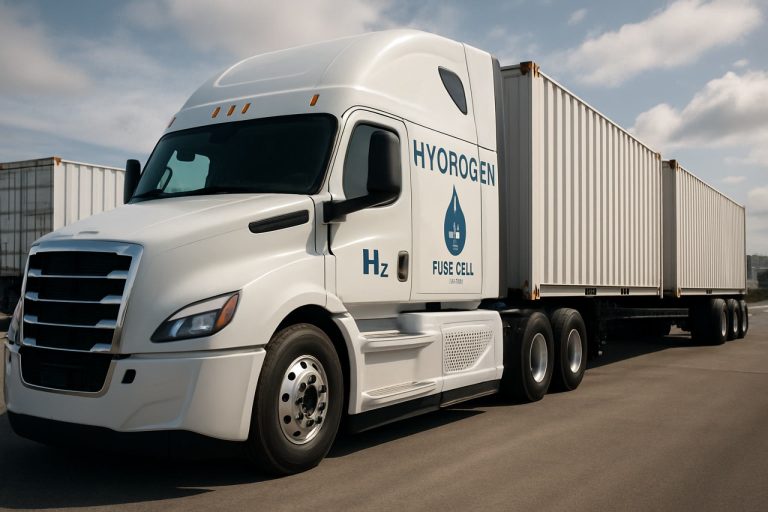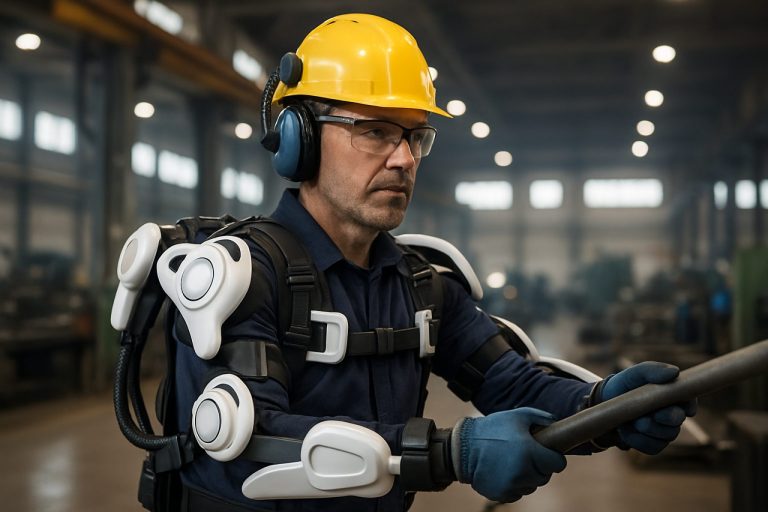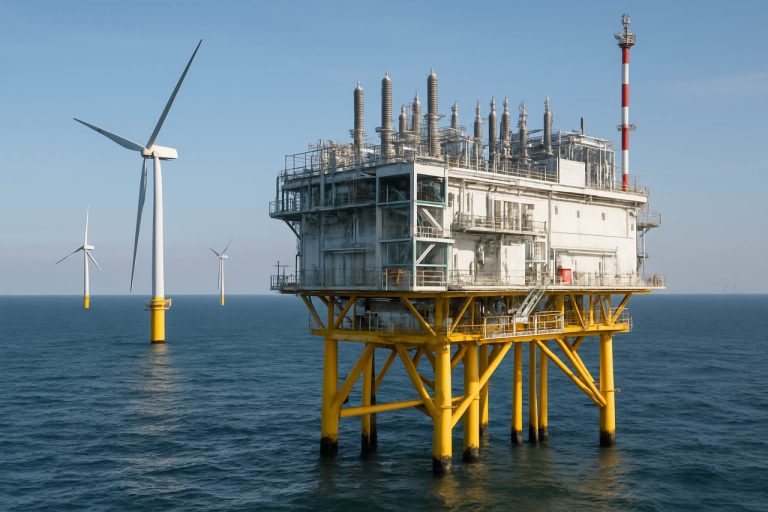
Power Electronics for Offshore Wind Energy Market Report 2025: In-Depth Analysis of Technology Advancements, Market Dynamics, and Growth Opportunities. Explore Key Trends, Regional Insights, and Forecasts Shaping the Industry’s Future.
- Executive Summary and Market Overview
- Key Technology Trends in Power Electronics for Offshore Wind
- Competitive Landscape and Leading Players
- Market Growth Forecasts (2025–2030): CAGR, Revenue, and Volume Analysis
- Regional Market Analysis: Europe, Asia-Pacific, North America, and Rest of World
- Future Outlook: Innovations and Emerging Applications
- Challenges, Risks, and Strategic Opportunities
- Sources & References
Executive Summary and Market Overview
The global market for power electronics in offshore wind energy is poised for robust growth in 2025, driven by accelerating investments in renewable energy infrastructure and the increasing deployment of large-scale offshore wind farms. Power electronics—comprising devices such as converters, inverters, and transformers—are critical for efficient energy conversion, grid integration, and the reliable operation of offshore wind turbines. These components enable the transformation of variable-frequency AC power generated by wind turbines into grid-compatible electricity, ensuring minimal losses and stable supply.
In 2025, the offshore wind sector is expected to witness a surge in installed capacity, particularly in Europe and Asia-Pacific. According to the International Energy Agency, global offshore wind capacity could reach over 230 GW by 2030, with annual additions accelerating through the mid-2020s. This expansion is underpinned by ambitious government targets, declining levelized costs of energy (LCOE), and technological advancements in turbine and substation design.
Power electronics play a pivotal role in enabling these advancements. The shift toward higher-voltage direct current (HVDC) transmission systems for far-shore projects is increasing demand for advanced power electronic converters and modular multilevel converters (MMCs). These technologies facilitate efficient long-distance transmission and grid stability, addressing the challenges posed by remote offshore locations. Leading industry players such as ABB, Siemens Energy, and Hitachi Energy are investing heavily in R&D to enhance the efficiency, reliability, and compactness of their power electronic solutions.
Market analysts project a compound annual growth rate (CAGR) of 8–10% for the offshore wind power electronics segment through 2025, with the market value expected to surpass USD 3 billion by year-end, as reported by MarketsandMarkets. Key growth drivers include the scaling up of turbine ratings (now exceeding 15 MW), the proliferation of floating wind platforms, and the integration of digital monitoring and predictive maintenance systems.
In summary, 2025 will mark a pivotal year for power electronics in offshore wind energy, characterized by technological innovation, expanding project pipelines, and a growing emphasis on grid resilience and decarbonization. The sector’s evolution will be shaped by continued collaboration between technology providers, utilities, and policymakers, ensuring that power electronics remain at the heart of the offshore wind revolution.
Key Technology Trends in Power Electronics for Offshore Wind
Power electronics are at the heart of offshore wind energy systems, enabling efficient conversion, control, and transmission of electrical power from turbines to the grid. As the offshore wind sector expands rapidly—driven by global decarbonization goals and increasing project scale—technological innovation in power electronics is critical to improving system reliability, reducing costs, and supporting integration with evolving grid architectures.
One of the most significant trends in 2025 is the widespread adoption of high-voltage direct current (HVDC) transmission systems. HVDC technology, enabled by advanced power electronic converters, is increasingly favored for large-scale offshore wind farms located far from shore. Modular multilevel converters (MMCs) are now the industry standard for HVDC links, offering superior efficiency, scalability, and fault tolerance compared to earlier technologies. This shift is exemplified by projects in the North Sea, where HVDC is used to connect multi-gigawatt wind clusters to mainland grids, as reported by Siemens Energy and Hitachi Energy.
Another key trend is the move toward higher voltage levels within wind turbines and array cables. The industry is transitioning from 33 kV to 66 kV systems, reducing electrical losses and enabling larger turbines and longer cable runs. This evolution is supported by advancements in medium-voltage power electronic converters, which are more compact, reliable, and capable of handling higher power densities. According to DNV, this shift is essential for next-generation turbines exceeding 15 MW in capacity.
Wide bandgap semiconductors, particularly silicon carbide (SiC) and gallium nitride (GaN), are also transforming offshore wind power electronics. These materials allow for higher switching frequencies, lower losses, and more compact converter designs, which are crucial for offshore applications where space and weight are at a premium. Leading manufacturers such as Infineon Technologies and Wolfspeed are accelerating the commercialization of SiC-based devices for wind power converters.
Finally, digitalization and condition monitoring are being integrated into power electronic systems, leveraging real-time data analytics and predictive maintenance to enhance reliability and reduce operational costs. This is particularly important for offshore assets, where access is challenging and downtime is costly, as highlighted by GE Renewable Energy.
Competitive Landscape and Leading Players
The competitive landscape for power electronics in offshore wind energy is characterized by a mix of established multinational conglomerates and specialized technology providers, all vying for market share as global offshore wind capacity expands. The sector is driven by the need for highly reliable, efficient, and scalable power conversion and transmission solutions that can withstand harsh marine environments and support increasingly larger wind turbines and higher voltage levels.
Key players in this market include ABB, Siemens Energy, Hitachi Energy, GE Renewable Energy, and Mitsubishi Electric. These companies offer a broad portfolio of power electronic components such as high-voltage direct current (HVDC) converters, medium-voltage drives, and grid integration systems tailored for offshore wind applications.
According to a 2024 market analysis by Wood Mackenzie, ABB and Siemens Energy maintain a leading position in the supply of HVDC transmission systems, which are critical for connecting large-scale offshore wind farms to onshore grids over long distances. Their dominance is attributed to extensive project experience, robust R&D investment, and a global service network. Hitachi Energy has also strengthened its market presence through strategic partnerships and the deployment of next-generation modular multilevel converters (MMC) that enhance system efficiency and reliability.
Emerging players and regional specialists, such as Ingeteam and Semikron Danfoss, are gaining traction by focusing on innovative power module designs, digital monitoring solutions, and cost-competitive offerings. These companies often collaborate with turbine manufacturers and EPC contractors to deliver customized solutions for specific offshore projects.
The competitive dynamics are further shaped by ongoing technological advancements, such as the integration of silicon carbide (SiC) and gallium nitride (GaN) semiconductors, which promise higher efficiency and reduced system footprint. Strategic alliances, mergers, and acquisitions are also prevalent, as companies seek to expand their technological capabilities and global reach in anticipation of accelerated offshore wind deployment through 2025 and beyond.
Market Growth Forecasts (2025–2030): CAGR, Revenue, and Volume Analysis
The market for power electronics in offshore wind energy is poised for robust growth between 2025 and 2030, driven by accelerating global investments in renewable energy infrastructure and the increasing scale of offshore wind projects. According to projections by MarketsandMarkets, the global power electronics market is expected to achieve a compound annual growth rate (CAGR) of approximately 5.5% during this period, with the offshore wind segment outpacing the broader market due to its unique technical requirements and rapid capacity additions.
Revenue from power electronics specifically tailored for offshore wind applications—including converters, inverters, and advanced control systems—is forecasted to reach USD 4.2 billion by 2030, up from an estimated USD 2.7 billion in 2025. This growth is underpinned by the increasing deployment of high-capacity turbines and the expansion of floating wind farms, which demand more sophisticated and reliable power electronic solutions. Wood Mackenzie projects that global offshore wind capacity will surpass 200 GW by 2030, with Europe and Asia-Pacific leading installations, further fueling demand for advanced power electronics.
Volume analysis indicates a significant uptick in the number of power electronic units shipped to offshore wind projects. The annual shipment volume is expected to grow at a CAGR of 7.2% from 2025 to 2030, reflecting both the rising number of new installations and the need for replacement and upgrade of existing systems. The adoption of silicon carbide (SiC) and gallium nitride (GaN) semiconductors is anticipated to accelerate, as these materials offer higher efficiency and reliability in harsh offshore environments, according to International Energy Agency (IEA) analyses.
Regionally, Europe will remain the dominant market, accounting for over 45% of global revenue in 2025, but rapid growth is expected in China and emerging markets such as Taiwan and South Korea. Policy support, grid modernization initiatives, and the push for decarbonization are key drivers shaping the market landscape. Overall, the period from 2025 to 2030 will see power electronics become increasingly central to the efficiency, scalability, and reliability of offshore wind energy systems worldwide.
Regional Market Analysis: Europe, Asia-Pacific, North America, and Rest of World
The global market for power electronics in offshore wind energy is experiencing robust growth, with regional dynamics shaped by policy frameworks, technological advancements, and project pipelines. In 2025, Europe, Asia-Pacific, North America, and the Rest of the World (RoW) each present distinct market characteristics and opportunities.
Europe remains the global leader in offshore wind deployment and, consequently, in the adoption of advanced power electronics. The region’s mature supply chain, ambitious decarbonization targets, and supportive regulatory environment—such as the European Green Deal—are driving demand for high-efficiency converters, inverters, and HVDC (high-voltage direct current) transmission systems. The United Kingdom, Germany, and the Netherlands are at the forefront, with large-scale projects like Dogger Bank and Hollandse Kust Zuid integrating next-generation power electronics to optimize grid integration and reduce losses. According to WindEurope, Europe is expected to add over 8 GW of new offshore wind capacity in 2025, further fueling the market for power electronics.
Asia-Pacific is rapidly catching up, led by China, Taiwan, South Korea, and Japan. China, in particular, is set to dominate new installations, with aggressive government targets and significant investments in local manufacturing of power electronic components. The region’s focus on floating wind technology, especially in Japan and South Korea, is spurring demand for compact, high-reliability power electronics capable of withstanding harsh marine environments. Global Wind Energy Council (GWEC) projects that Asia-Pacific will account for nearly half of global offshore wind additions in 2025, making it a critical market for suppliers of advanced power conversion and grid connection solutions.
- North America is emerging as a high-potential market, with the U.S. federal government’s commitment to deploy 30 GW of offshore wind by 2030. Projects like Vineyard Wind and Empire Wind are driving demand for robust power electronics, particularly for long-distance HVDC transmission to connect offshore farms to onshore grids. The region’s market is characterized by a growing emphasis on local content and supply chain development, as noted by American Clean Power Association.
- Rest of the World (RoW) includes nascent markets in Latin America, the Middle East, and Africa. While current installed capacity is limited, pilot projects and feasibility studies are underway, especially in Brazil and South Africa. These regions present long-term opportunities for power electronics providers as governments explore offshore wind to diversify energy portfolios, according to International Renewable Energy Agency (IRENA).
In summary, while Europe and Asia-Pacific will continue to dominate the market for power electronics in offshore wind in 2025, North America and RoW are poised for accelerated growth, driven by policy support and the need for grid modernization.
Future Outlook: Innovations and Emerging Applications
The future outlook for power electronics in offshore wind energy is marked by rapid innovation and the emergence of new applications that are set to redefine the sector by 2025. As offshore wind farms move further from shore and increase in capacity, the demand for advanced power electronic systems—such as high-voltage direct current (HVDC) converters, modular multilevel converters (MMCs), and wide bandgap semiconductor devices—is intensifying. These technologies are critical for efficient energy conversion, grid integration, and minimizing transmission losses over long distances.
One of the most significant innovations is the adoption of silicon carbide (SiC) and gallium nitride (GaN) semiconductors in power electronic devices. These materials offer higher efficiency, greater thermal stability, and reduced size compared to traditional silicon-based components. By 2025, the integration of SiC and GaN is expected to enable more compact and reliable converter stations, which are essential for floating wind platforms and deepwater installations International Energy Agency.
Emerging applications include the development of multi-terminal HVDC grids, which allow for the interconnection of multiple offshore wind farms and cross-border energy trading. This approach enhances grid flexibility and resilience, supporting the broader integration of renewables into national and regional power systems. Pilot projects in Europe, such as the North Sea Wind Power Hub, are already demonstrating the feasibility and benefits of these multi-terminal HVDC networks DNV.
Digitalization and advanced control algorithms are also transforming power electronics for offshore wind. Predictive maintenance, real-time monitoring, and adaptive control systems are being deployed to optimize the performance and lifespan of power electronic components. These digital solutions are expected to reduce operational costs and downtime, further improving the levelized cost of energy (LCOE) for offshore wind projects Wood Mackenzie.
- Widespread deployment of floating wind turbines will drive demand for lightweight, high-efficiency power electronics.
- Hybrid offshore energy systems, combining wind with solar or hydrogen production, will require versatile and robust power conversion solutions.
- Standardization and modularization of power electronic systems will accelerate project deployment and reduce costs.
By 2025, these innovations and emerging applications are poised to make power electronics a cornerstone of the offshore wind industry’s next phase of growth, supporting larger, more complex, and more reliable renewable energy systems worldwide.
Challenges, Risks, and Strategic Opportunities
The deployment of power electronics in offshore wind energy systems is pivotal for efficient energy conversion, grid integration, and operational reliability. However, the sector faces a complex landscape of challenges and risks, while also presenting significant strategic opportunities as the market matures in 2025.
Challenges and Risks
- Harsh Environmental Conditions: Offshore wind installations are exposed to saltwater corrosion, humidity, and extreme weather, which can degrade power electronic components and reduce their lifespan. This necessitates advanced protective measures and robust designs, increasing both capital and maintenance costs (International Energy Agency).
- Reliability and Maintenance: The remote location of offshore wind farms complicates access for maintenance and repair of power electronic systems. Unplanned outages can lead to significant revenue losses, making reliability a critical concern (DNV).
- Grid Integration and Stability: As offshore wind capacity grows, integrating variable renewable energy into existing grids poses technical challenges. Power electronics must manage voltage fluctuations, harmonics, and frequency stability, requiring sophisticated control algorithms and real-time monitoring (IEEE Power & Energy Society).
- Supply Chain Constraints: The rapid scaling of offshore wind projects is straining the supply chain for high-performance semiconductors and specialized components, leading to potential delays and cost escalations (Wood Mackenzie).
Strategic Opportunities
- Technological Innovation: The shift toward wide-bandgap semiconductors (such as SiC and GaN) offers higher efficiency, compactness, and improved thermal performance, directly addressing reliability and size constraints (Infineon Technologies AG).
- Digitalization and Predictive Maintenance: Integrating IoT sensors and AI-driven analytics into power electronic systems enables predictive maintenance, reducing downtime and optimizing operational costs (Siemens Energy).
- Standardization and Modularization: Developing standardized, modular power electronic solutions can streamline manufacturing, simplify maintenance, and accelerate deployment, especially as offshore wind projects scale up in size and complexity (GE Renewable Energy).
In 2025, the interplay between these challenges and opportunities will shape the competitive landscape for power electronics in offshore wind, driving innovation and strategic investment across the value chain.
Sources & References
- International Energy Agency
- Siemens Energy
- Hitachi Energy
- MarketsandMarkets
- Hitachi Energy
- DNV
- Infineon Technologies
- Wolfspeed
- GE Renewable Energy
- Mitsubishi Electric
- Wood Mackenzie
- Ingeteam
- Semikron Danfoss
- Global Wind Energy Council (GWEC)



